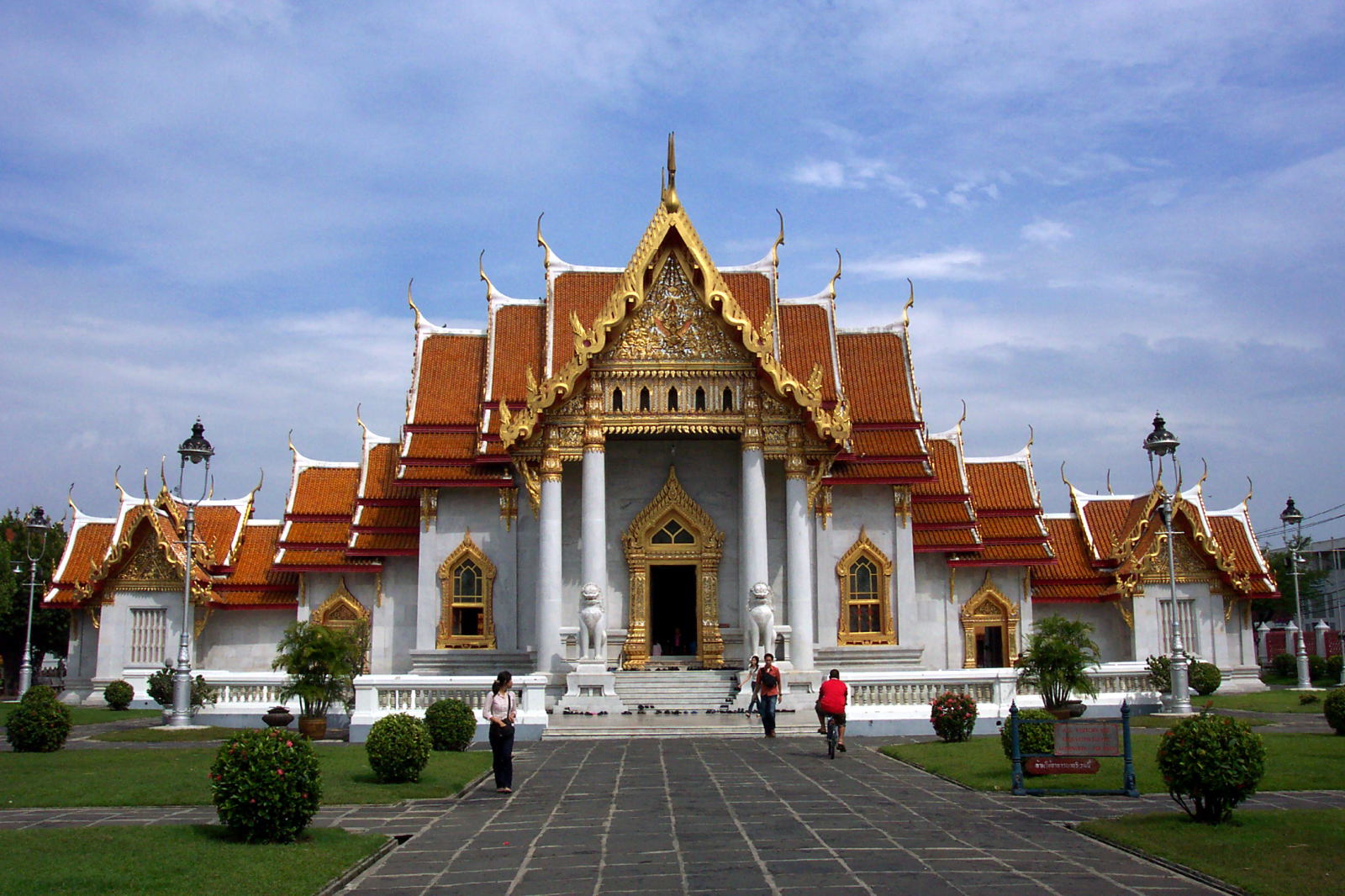The Sights of Bangkok

For the first time visitor, deciding what to see and do in Bangkok can be over-whelming. There's just so many possibilities. My first bit of advice is to know yourself: what interests you the most? Also, what's your preferred pace for travel? Everyone will have slightly different answers to those two questions, which is why packaged group tours to places like Bangkok are to be avoided. Personally, I think one of the best ways to attack planning a trip to the Big Mango is to break it down into which parts of the city you want to visit. The Thai capital is really more like a collection of villages packed tightly together. Each of these towns with the city has it's own character — often it's own reason for being in the first place — and this is what makes the city so fascinating, even to one who lived there for twenty years. So, let's break down the city into the parts that are of interest to tourists. You could easily spend the good part of a day exploring each of these:
Ratanakosin: The Royal City
At the heart of Bangkok from its very beginning over 200 years ago is the royal district referred to as Ratanakosin. Thanks to defensive canals, it's technically an island, and is often referred to as such. The main, but far from only, sight in the royal city is the Grand Palace, once the residence of Thai kings but now only used for state occassions. Within the royal palace is the Temple of the Emerald Buddha, housing the country's most sacred image.
Immediately south of the palace is Wat Po, famous for it's massive reclining Buddha statue, as well as its school of Thai Massage. East of the grand palace is the former Saranarom Palace, now home to the foreign ministry, and next to that is the defense ministry with its impressive collections of cannons. Next to that is a small shrine which houses the city pillar, marking the exact center of the city. In front of the palace to the north is a large field. Near the north end of that is the National Museum, housed in the former “Front” Palace. Due north of the field, across a very busy street, is the National Gallery.
Taking in all of the sights of Ratanakosin is almost impossible to do in a single day. If the museums and galleries in particular interest you, set aside a separate day just for them.
Chinatown
The Chinese community in Bangkok pre-dates the founding of the Thai capital in the city. Indeed, the land where the grand palace is today was originally a community of Chinese traders. When King Rama I decided to establish the capital on the site of the village of Bangkok, he asked the traders to move. They settled to the east of the new city, along the river. It may be hard to believe today, but the narrow Sampaeng Lane, which isn't even big enough for a car, was once Chinatown's main street.
In 1902, the foreign community, who settled on the river further east of Chinatown, petitioned the king for a larger road. Yaowarat Road was built as a result, and the celebration of the road's 111th birthday was the highlight of Chinatown's 2003 Chinese New Year celebration.
Bangkok's vibrant Chinatown district runs along Yaowarat Road from Odeon Circle, where a huge ceremonial Chinese gate unmistakably marks the entrance, up to the Ong Ang Canal, which marks the outer boundaries of the royal district. Yaowarat Road itself is lined with many gold shops, and Chinatown is indeed one of the better places to shop for gold. However, just off the road in either direction is a whole other world where, it is said, you can find just about anything.
Chinatown is an easy place to explore on foot, and in fact there really isn't any other way. Thanks to nearby subway stops, getting to and around the area is very easy. I suggest starting from Hualampong rail station and walking the short distance from there to Wat Traimit, home of a five and a half ton solid gold Buddha statue. From there, you can meander up Yaowarat Road and Sampeng Lane to the other end of the district. Aside from just the sights and smells of the area, other interesting sights include the Thien Fa charity and Wat Mangkon Kamalawat.
Dusit
The Dusit area is Bangkok's "new" royal city. It was established at the beginning of the 20th century by King Rama V (Chulalongkorn) upon his return from a European tour. Inspired by what he saw in the great capitals of the west, the district is laid out with wide boulevards lined with trees. The king established a new palace compound which he named Dusit, which means "Heavenly Garden." In the compound he first build a new palace, Vimanmek Mansion. After lying almost forgotten for nearly 80 years, the mansion has now been restored and turned into a museum dedicated to Rama V.
Outside of Vimanmek palace but not part of it, is the Ananta Samakorn Throne Hall, which frequently plays host to an exhibit called “Treasures of the Kingdom”. Not far the Vimanmek is Wat Benjamabophit, commonly called the Marble Temple.
Siam
Bangkok's main shopping area is commonly referred to as Siam, orginally anchored by Siam Square, then later joined by bigger and fancier shopping malls. While shopping is the main attraction, the district is also home to the Jim Thompson House and Museum, as well as the Bangkok Art & Culture Center.